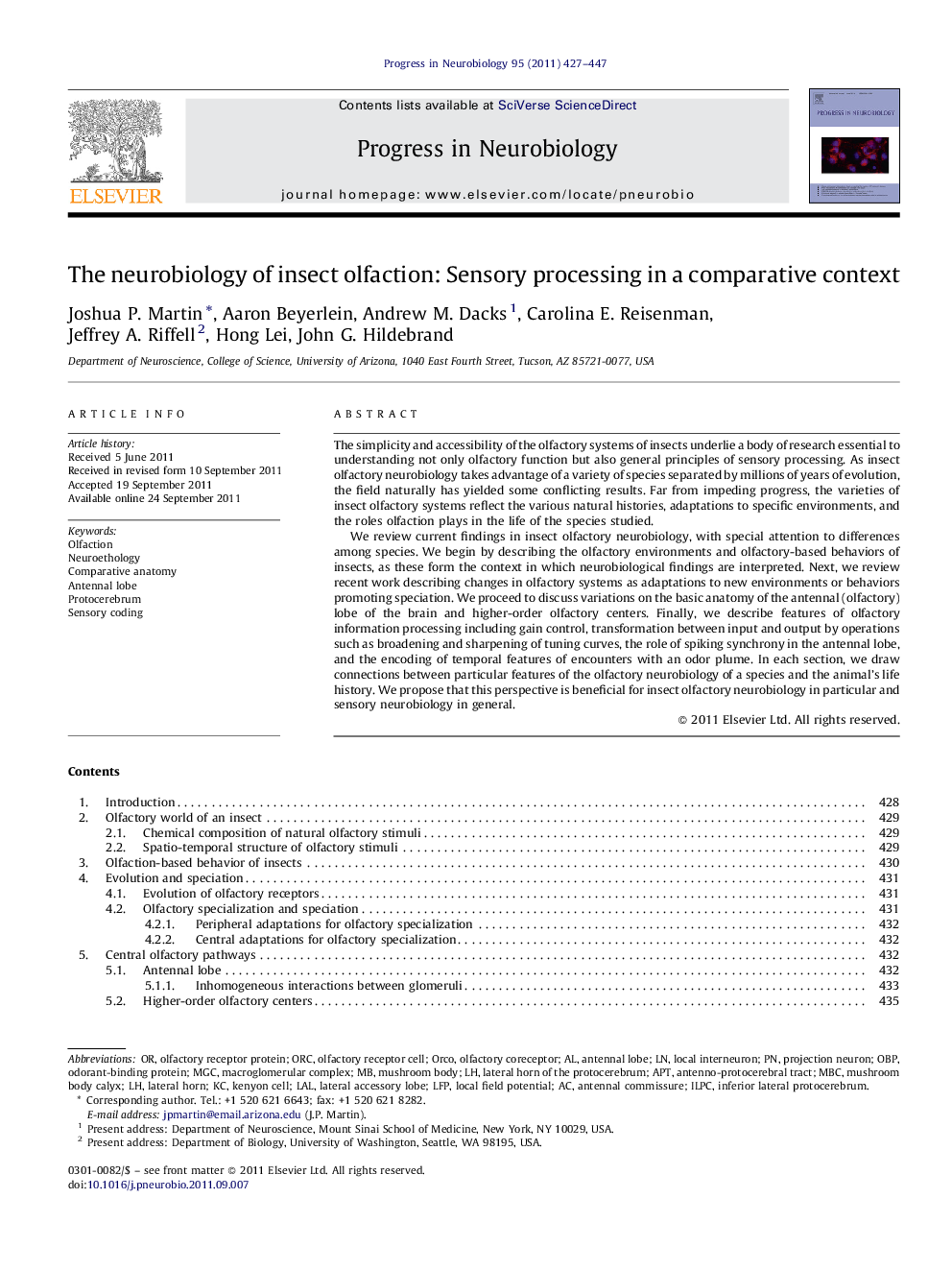| Article ID | Journal | Published Year | Pages | File Type |
|---|---|---|---|---|
| 4353593 | Progress in Neurobiology | 2011 | 21 Pages |
The simplicity and accessibility of the olfactory systems of insects underlie a body of research essential to understanding not only olfactory function but also general principles of sensory processing. As insect olfactory neurobiology takes advantage of a variety of species separated by millions of years of evolution, the field naturally has yielded some conflicting results. Far from impeding progress, the varieties of insect olfactory systems reflect the various natural histories, adaptations to specific environments, and the roles olfaction plays in the life of the species studied.We review current findings in insect olfactory neurobiology, with special attention to differences among species. We begin by describing the olfactory environments and olfactory-based behaviors of insects, as these form the context in which neurobiological findings are interpreted. Next, we review recent work describing changes in olfactory systems as adaptations to new environments or behaviors promoting speciation. We proceed to discuss variations on the basic anatomy of the antennal (olfactory) lobe of the brain and higher-order olfactory centers. Finally, we describe features of olfactory information processing including gain control, transformation between input and output by operations such as broadening and sharpening of tuning curves, the role of spiking synchrony in the antennal lobe, and the encoding of temporal features of encounters with an odor plume. In each section, we draw connections between particular features of the olfactory neurobiology of a species and the animal's life history. We propose that this perspective is beneficial for insect olfactory neurobiology in particular and sensory neurobiology in general.
► The diversity of insect olfactory systems is a boon to olfactory neurobiology. ► Insects exhibit neural adaptations to diverse olfactory environments and behaviors. ► Olfactory system anatomy is characterized by variations on a common Bauplan. ► Mechanisms of information processing vary with requirements of a species’ behavior.
